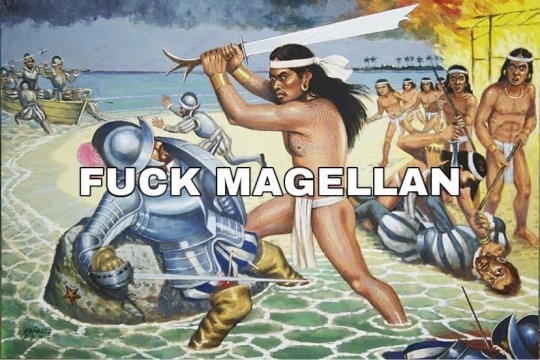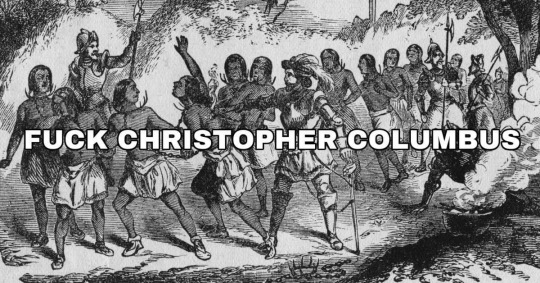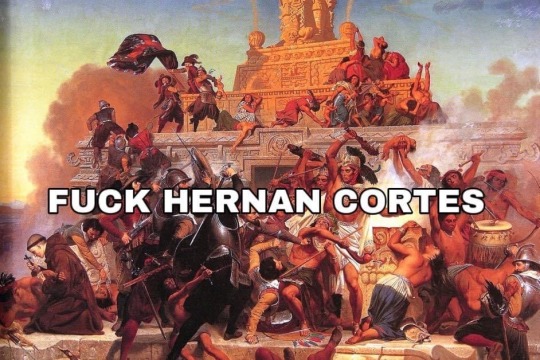#john chivington
Explore tagged Tumblr posts
Text
ugh. chivington. what is he doing in my language learning programme
#i can't be academic if i'm thinking about how much i hate him#get him out#what is he doing#i hate him#and not in the i love to hate him way#i just despise him#WHY is he here it's a language website it has WORDS in it#peace and love on planet earth#he has no place here#dee rambles#john chivington
2 notes
·
View notes
Text
thankfully, we now have tabletop gaming systems that dont have the creator's virulent colonial racism baked right into the premise and core rules, let alone the setting
The bandeirantes ([bɐ̃dejˈɾɐ̃tʃis]; lit. 'flag-carriers') were slavers, explorers, adventurers, and fortune hunters in early Colonial Brazil. They are largely responsible for Brazil's great expansion westward, far beyond the Tordesillas Line of 1494, by which Pope Alexander VI divided the new continent into a western, Castilian section, and an eastern, Portuguese section.
average DnD character
#dig gary gygax up and kill him again#did you know that gary gygax was not only a self admitted biological determinist that thought 'female brains' werent interested in ttrpgs#but also!#directly quoted john chivington in his rather famous genocidal mantra
121 notes
·
View notes
Note
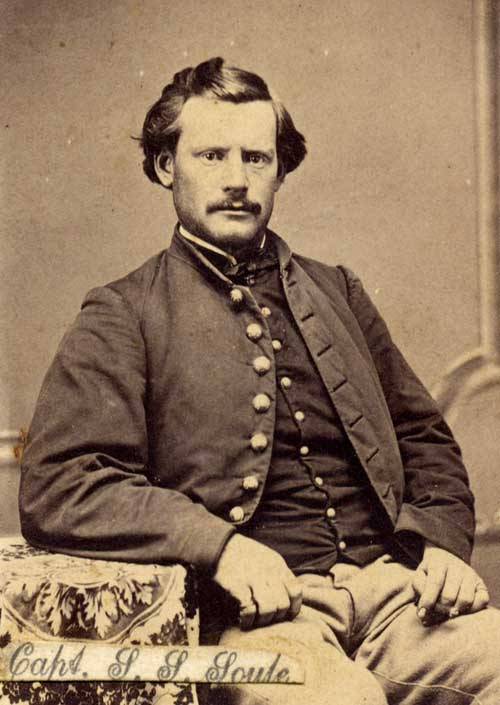

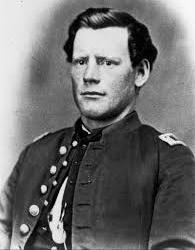

Submission: Silas Soule (1838-1865). He was an abolitionist and a member of the Immortal Ten (a militant abolitionist group) with John Brown, but originally worked on the Underground Railroad. He also helped other abolitionists escape from jail, and was actually the guy who gave the Immortal Ten their name! (Cue 'fish fear me, women love me' but its confederates instead of fish and me instead of women)
Later he joined the army, and proved his bravery at the Battle of Glorieta Pass. His commander at Glorieta Pass was called John Chivington, and he was known as the 'fighting parson' due to his religious extremism (tw: discussion of genocide from now on. I try to avoid the details, but yeah. Bad shit happens). Chivington was ordered to kill Native Americans, and he did so gladly. This culminated in the Sand Creek Massacre, considered one of the worst atrocities ever committed by the US army. Silas refused to participate in the massacre, ordered his men to not fire, and even tried to rescue some of the Native Americans. Afterwards he wrote to his previous commander detailing the massacre, and Chivington left the army in disgrace. If it wasn't for Silas, nobody might have found out about Sand Creek. Silas was shot dead one night, presumably in retaliation for speaking out against injustice. His murderers escaped punishment.
So he's a personal hero of mine. Since I first learnt about the Indian Wars in school, I've always respected his moral strength and determination to tell the truth. As far as I'm concerned, he's gorgeous as well. Apparently he was super friendly too, and had a great sense of humour! What a guy! Probably one of my longest standing crushes XD. I never shut up about him, as proved by the length of this ask, which could have been summarised as 'he's cute and also not racist'.
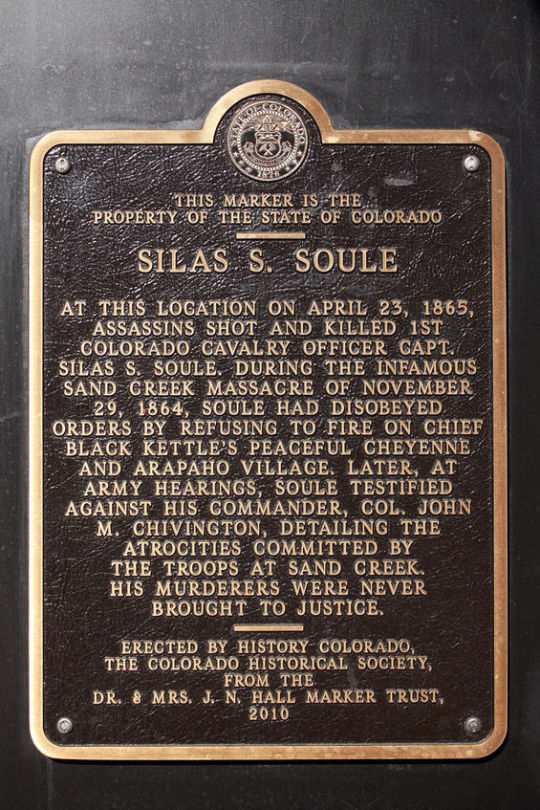

Oh, and a plaque was installed where he died, and people still leave flowers at his grace (he's buried in Denver, and its a dream of mine to visit his grave) <3
-
252 notes
·
View notes
Photo

Sand Creek Massacre
The Sand Creek Massacre (29 November 1864) was a slaughter of citizens of the Arapaho and Cheyenne nations at the hands of the Third Colorado Cavalry of US Volunteers under the command of Colonel John Chivington, resulting in casualties estimated at over 150 in the Native American encampment, which was in compliance with the policies of US officials.
Black Kettle (l. c. 1803-1868), chief of the Southern Cheyenne, had consistently sought peace with the White settlers since signing the Fort Laramie Treaty of 1851. He rejected the call to war of others – including Chief Tall Bull of the Dog Soldiers and Roman Nose (Cheyenne Warrior) – and continued to trust in the assurances of the representatives of the US government that the Cheyenne would be left in peace. These representatives were under the impression that Black Kettle spoke for all the Cheyenne in signing the Fort Laramie Treaty of 1851 or the Treaty of Fort Wise in 1861, but he had no control over other chiefs like Tall Bull (l. 1830-1869) or Roman Nose (l. c. 1830-1868), who continued to resist the encroachment of Euro-Americans on their lands.
Hostilities escalated in June 1864 with the Hungate Massacre, in which the killing of a White family was attributed to Cheyenne warriors. John Evans (l. 1814-1897), then governor of Colorado, sent word to the Native communities that any who were friendly toward the United States should seek safety near Fort Lyon, and all others would be considered hostiles. Black Kettle – along with other chiefs including White Antelope (l. c. 1789-1864), Little Wolf (l. c. 1820-1904), and Chief Niwot (Left Hand) of the Southern Arapaho (l. c. 1825-1864) accepted the invitation and moved their people to Big Sandy Creek, about 40 miles (65 km) northwest of Fort Lyon.
On the morning of 29 November 1864, Colonel John Chivington (l. 1821-1894) led the Third Colorado Cavalry in a surprise attack on the encampment – even though Black Kettle, as instructed, was flying the American flag and the white flag above his lodge – slaughtering over 150 innocent people, mostly young children, women, and the elderly. Afterwards, Chivington claimed this engagement was a great military victory against an armed alliance of Cheyenne and Arapaho until reports of survivors – like the Cheyenne-Anglo interpreter George Bent (l. c. 1843-1918) – and soldiers like Captain Silas Soule (l. 1838-1865) – contradicted him.
The ensuing investigation established the conflict as a massacre of innocents with only a small armed force of Cheyenne and Arapaho warriors in the camp killed defending themselves and their families. Still, the event was designated a "battle" by the press of the time and is often still referred to as such in the present day. In 2007, the area of the massacre was declared a National Historic Site, and, in 2014, Colorado Governor John Hickenlooper gave an apology to the descendants of those murdered at Sand Creek; but the policies that made that massacre possible have never been acknowledged, and the US government has never offered a similar apology.
Background
The California Gold Rush of 1848 sent scores of miners and their families through the lands of the Arapaho, Cheyenne, Sioux, and others, disrupting their lives, scattering – and killing – the buffalo (the primary food source of the Plains Indians), and destroying the prairie with their wagons and cattle. Clashes between the Natives and settlers led to the Fort Laramie Treaty of 1851, establishing territories for Native American nations in the region which, according to this treaty, the United States had no claim to.
Black Kettle, and other chiefs, signed the treaty trusting in the word of the US delegates that they would not be bothered any further. The treaty was never honored by the White settlers or their government, however, and was completely discarded in 1858 during the Pike's Peak Gold Rush. When the Natives again fought to defend their lands, another treaty was offered – the Treaty of Fort Wise of 1861 – which the US government and its citizens paid no more attention to than the one they had presented to the people of the Plains in 1851. The Dog Soldiers – one of the military societies of the Cheyenne – responded to the invasion with armed resistance under their leader Tall Bull while Roman Nose led his own band in defense of Cheyenne lands in what came to be known as the Colorado War (1864-1865).
Fort Laramie Treaty 1868
U.S. National Archives and Records Administration (Public Domain)
Although Black Kettle – and other 'peace chiefs' – rejected the course taken by Tall Bull and Roman Nose, they could do nothing to stop them. The Cheyenne had a representational government, the Council of Forty-Four, which made decisions for the whole nation, but the chief of each band was free to accept or reject their conclusions. The council had nothing to say regarding declarations of war which were the responsibility of individual chiefs of military societies. Black Kettle's signature on a treaty did not in any way bind Tall Bull to recognize it.
Continue reading...
34 notes
·
View notes
Text
November 29, 1864
U.S. Army troops led by Colonel John Chivington attack Cheyenne and Arapaho people in what comes to be known as the Sand Creek Massacre, killing mostly women and children.
#sand creek massacre#november#1864#colorado wars#us history#american history#indigenous history#colorado
2 notes
·
View notes
Photo
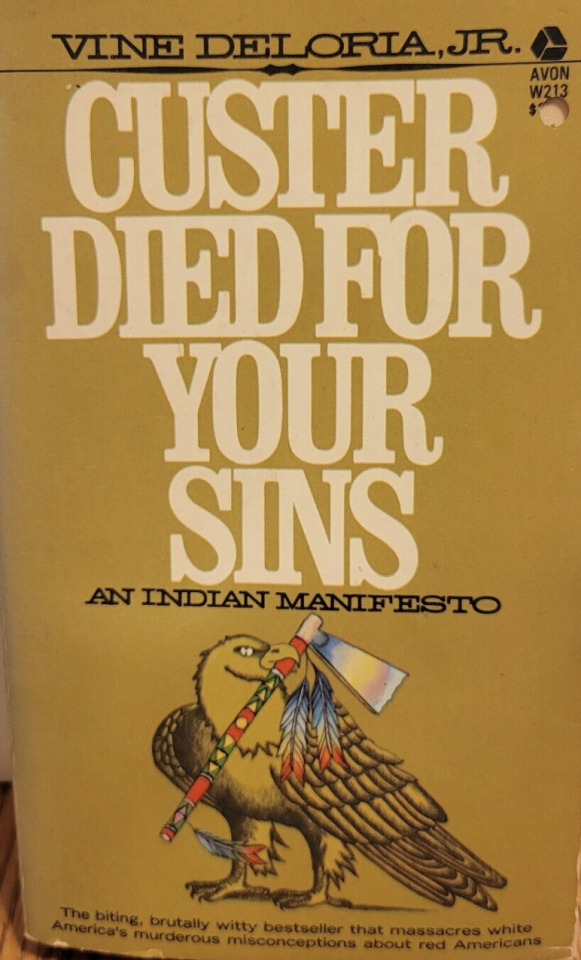

In 1855, white militias received five dollars for every severed Native American head they brought to authorities in Shasta, California.
In 1863, white militias were paid twenty-five cents per Indigenous scalp in Honey Lake, California.
Colonel John Chivington of the US Army said in 1864, “Damn any man who sympathizes with Indians … I have come to kill Indians, and believe it is right and honorable to use any means under God’s heaven to kill Indians. … Kill and scalp all, big and little.”
The Yreke Herald published an editorial on August 7, 1853: “Extermination is no longer a question of time – the work has commenced and let the first man that says treaty or peace be regarded as a traitor.”
One hundred thousand Native Americans were killed during the first two years of the California gold rush. It was a period that historian Alvin Josephy called “as close to genocide as any tribal people had faced, or would face, on the North American continent.”
Peter Burnett, the first Governor of California, said during his January 1851 address, that “a war of extermination will continue to be waged between the two races until the Indian race becomes extinct [and] the inevitable destiny of the race is beyond the power or wisdom of man to avert.”
As the author Vine Deloria Jr. wrote in Custer Died For Your Sins, the prevailing attitude was “that Indians were wild animals to be hunted and skinned. Bounties were set and an Indian scalp became more valuable than beaver, otter, marten, and other animal pelts.”
37 notes
·
View notes
Text
Banner Year, or Silas Soule and the American Genocide
Banner Year, or Silas Soule and the American Genocide
by heneversmiledagain
Crowley is sent to America to cause a ruckus. However, America is creating far too many ruckuses already. As tensions escalate between the Native Americans and the US army, he fears that events may become uncontrollable.
OR, it takes a very brave person to stand up against tyranny and injustice.
Words: 5471, Chapters: 1/1, Language: English
Fandoms: Good Omens - Neil Gaiman & Terry Pratchett, Good Omens (TV), 19th Century CE RPF
Rating: Mature
Warnings: Creator Chose Not To Use Archive Warnings
Categories: Gen
Characters: Aziraphale (Good Omens), Crowley (Good Omens), Silas Soule, John Chivington, Edward Wynkoop, Black Kettle
Relationships: Aziraphale/Crowley (Good Omens)
Additional Tags: Sad, Sad Ending, Historical, Historical Accuracy, Period-Typical Racism, Genocide, The Sand Creek Massacre, Happy Indigenous History Month, I say that and then write this, Native American/First Nations History, While You Were All Celebrating Pride I Studied 'Bury My Heart At Wounded Knee', And Became Depressed Because Of It
From https://ift.tt/hV0YeNH https://archiveofourown.org/works/47645719
2 notes
·
View notes
Text
Learning about history has ruined me because I'm at a family gathering and suddenly I announce,
'No john what are you doing john this is a bad idea no murder no john bad john not nice john'
And my family are like who tf is john and I looked at them really seriously and said 'don't be a chivington'
4 notes
·
View notes
Text
Events 11.29 (before 1900)
528 – Antioch suffers its second major earthquake in two years, killing thousands and destroying its remaining edifice. 561 – Following the death of King Chlothar I at Compiègne, his four sons, Charibert I, Guntram, Sigebert I and Chilperic I, divide the Frankish Kingdom. 618 – The Tang dynasty scores a decisive victory over their rival Xue Rengao at the Battle of Qianshuiyuan. 903 – The Abbasid army under Muhammad ibn Sulayman al-Katib defeats the Qarmatians at the Battle of Hama. 1114 – A large earthquake damages the areas of the Crusaders in the Middle East. Antioch, Mamistra, Marash and Edessa are hit by the shocks. 1549 – The papal conclave of 1549–50 begins. 1612 – The Battle of Swally takes place, which loosens the Portuguese Empire's hold on India. 1729 – Natchez Indians massacre 138 Frenchmen, 35 French women, and 56 children at Fort Rosalie, near the site of modern-day Natchez, Mississippi. 1732 – The magnitude 6.6 Irpinia earthquake causes 1,940 deaths in the former Kingdom of Naples, southern Italy. 1776 – During the American Revolutionary War, the Battle of Fort Cumberland, Nova Scotia, comes to an end with the arrival of British reinforcements. 1777 – San Jose, California, is founded as Pueblo de San José de Guadalupe by José Joaquín Moraga. It is the first civilian settlement, or pueblo, in Alta California. 1781 – The crew of the British slave ship Zong murders 54 Africans by dumping them into the sea to claim insurance, beginning the Zong massacre. 1783 – A 5.3 magnitude earthquake strikes New Jersey. 1807 – John VI of Portugal flees Lisbon from advancing Napoleonic forces during the Peninsular War, transferring the Portuguese court to Brazil. 1830 – An armed rebellion against Russia's rule in Poland begins. 1847 – The Sonderbund is defeated by the joint forces of other Swiss cantons under General Guillaume-Henri Dufour. 1847 – Missionaries Dr. Marcus Whitman, his wife Narcissa, and 15 others are killed by Cayuse and Umatilla Indians, causing the Cayuse War. 1850 – The treaty, Punctation of Olmütz, is signed in Olomouc. Prussia capitulates to Austria, which will take over the leadership of the German Confederation. 1863 – American Civil War: Union forces under General Ambrose Burnside successfully defend Knoxville, Tennessee from an attack by Confederate forces under General James Longstreet in the Battle of Fort Sanders during the Siege of Knoxville. 1864 – Colorado War: Colorado volunteers led by Colonel John Chivington massacre at least 150 Cheyenne and Arapaho noncombatants inside Colorado Territory. 1864 – American Civil War: The Confederate Army of Tennessee misses an opportunity to crush the Union Army of the Ohio in the Battle of Spring Hill during the Franklin–Nashville campaign. 1872 – The Modoc War begins with the Battle of Lost River. 1877 – Thomas Edison demonstrates his phonograph for the first time. 1890 – The Meiji Constitution goes into effect in Japan, and the first Diet convenes. 1899 – FC Barcelona is founded by Catalan, Spanish and Englishmen. It later develops into one of Spanish football's most iconic and strongest teams.
0 notes
Text
160 Years Later, Descendants of Army's Sand Creek Massacre Still Wait for Justice
Source: Military.com
160 Years Later, Descendants of Army's Sand Creek Massacre Still Wait for Justice
Source: Military.com
1 note
·
View note
Text
Dungeons and Dragons accounts for a lot of this - in the seventies when it was being developed, attitudes about the US genocide of Native peoples were far more triumphalist.
Gary Gygax in particular was keen on "white man's burden" fiction about brave settlers battling barbarous Native Americans, as well as an admirer of US military figures who took part in the genocide (notably Colonel John Chivington, perpetrator of the Sand Creek Massacre). In forum posts from the 2000s, he favourably compared Chivington's actions to the actions of a D&D paladin.
I saw this mentioned as a bit of an aside on another post but since it was a little bit besides the point of that post decided to make my own post about it instead of derailing that one.
It IS very interesting how in Lord of The Rings orcs are the soldiers of a (compared to the rest of the world) highly industrialized and technologically advanced military force, yet pretty much every high fantasy media that has borrowed the concept of orcs since then has instead given them the "tribal savages" treatment, and i don't know how I failed to realize that difference until I saw someone else bring it up.
Like of course this is not saying that the depiction of orcs in LoTR is not problematic for a lot of different reasons (there have been years of discussions unpacking that) but it IS an interesting change and I think a pretty ideologically loaded one.
Thinking about it makes me remember this article I read a few years ago about how, regardless of genre trappings, a lot of high fantasy (especially in ttrpgs and videogames) actually has a lot more in common narratively and thematically with wild west ""cowboys vs indians"" films and shows than it has with its aesthetic inspirations. Like once you look at it with that lense in mind it becomes really conspicuous how much these works like giving the "tribal savages" treatment to any sapient creature that exists for the heroes to fight.
10K notes
·
View notes
Text

Jim Baker: (1818-1898) mountain man, trapper/guide
August 1841 involved in a desperate fight at Bitter Creek and the Snake River junction when 35 trappers beat off a large band of Sioux, Cheyenne, and Arapaho.
1845 joined John C. Fremont’s third expedition, which traveled into Mexican California with the plan of surveying the central Rocky Mountains, the Great Salt Lake region, and part of the Sierra Nevadas along the way.
1859 during the Colorado Goldrush, Baker settled in Denver and guided numerous parties into the mountains. Here, he also built a toll bridge and owned the first coal mine in Colorado, about 18 miles west of Denver. This same year, Baker was appointed a captain in the Colorado Militia along with John Chivington, who later lead the Colorado Territorial forces in the infamous Sand Creek Massacre
His cabin remains in Savery, Wyoming, and is now located at the Little Snake River Museum.
1 note
·
View note
Text

i hope they all fall into the abyss. unfortunately, this episode shows signs of being historically accurate
0 notes
Text
History
November 29, 1864 - U.S. Army troops led by Colonel John Chivington attacked and killed at least 400 Cheyenne and Arapahoe Indians at Sand Creek, Colorado after they had already surrendered.
November 29, 1890 - The first Imperial Diet was opened in Japan, consisting of a House of Peers and a House of Representatives.
November 29, 1929 - American explorer Richard Byrd and Bernt Balchen completed the first airplane flight to the South Pole.
November 29, 1947 - Palestine was partitioned into Jewish and Arab land by the U.N. General Assembly, resulting in the establishment of the Jewish state of Israel the following year.
November 29, 1989 - Forty-one years of Communist rule came to an end in Czechoslovakia following a twelve day revolution sparked by the beating of protesters. The Czech parliament voted unanimously to repeal constitutional clauses granting the Communist Party sole power. This brought a wave of reform headed by playwright Vaclav Havel, who later became president in the first free elections since World War II.
Birthday - Little Women author Louisa May Alcott (1832-1888) was born in Philadelphia, Pennsylvania.
Birthday - Nellie Tayloe Ross (1876-1977) was born in St. Joseph, Missouri. She became America's first female governor, finishing her husband's term as governor of Wyoming after his death. She was elected governor in 1924, but lost the 1927 election. She also served as vice chairman of the Democratic National Committee and was named director of the U.S. Mint by President Franklin D. Roosevelt in 1933.
Birthday - Hollywood director Busby Berkeley (1895-1976) was born in Los Angeles (as William Berkeley Enos). After serving in World War I as an entertainment officer, he changed his name and began his show business career. Best known for lavish musicals including Forty-Second Street, Gold Diggers of 1933, Babes in Arms, Strike Up the Band, and Girl Crazy.
Birthday - British author C.S. Lewis (1898-1963) was born in Belfast, Ireland (as Clive Staples Lewis). He wrote books on Christian teachings including The Pilgrim's Regress, The Problem of Pain, Miracles, and The Screwtape Letters.
0 notes

